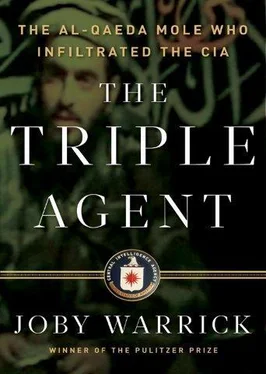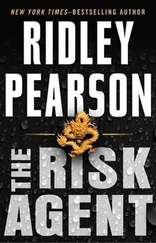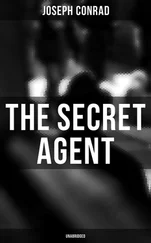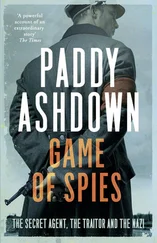The trail of evidence stretched across three continents. It started in Pakistan, where security forces captured a pair of midlevel al-Qaeda operatives with knowledge of the terrorist group’s inner workings. It wound through a secret CIA prison in Eastern Europe, where the interrogation of one of the men yielded a partial name. It picked up intensity in Langley, Virginia, where Jennifer Matthews and her colleagues in the CIA’s bin Laden unit poured over the new data searching for patterns and connections. In 2007, it reached the office of then-CIA director Michael V. Hayden, who was briefed by his senior counterterrorism advisers one morning about a potentially momentous discovery: They had learned the name of the trusted al-Qaeda courier who served as bin Laden’s personal connection to the outside world. All that remained was to find the man who would lead them to bin Laden’s door.
“We think we’ve found a path forward,” one of Hayden’s briefers said.
The task of locating bin Laden’s courier could take months or even years, Hayden knew, but he considered the discovery important enough to warrant a full airing during one of his regular meetings with President George W. Bush and his national security advisers. True, there had been other promising leads—some of them more akin to Elvis Presley sightings than intelligence tips, Hayden thought. This one seemed more promising than most, but it was not, he cautioned, a breakthrough.
“There is rarely a ‘eureka’ moment,” Hayden has said. “It’s one grain of sand at a time.”
Indeed, the progress in finding the courier remained agonizingly slow. The man had first come to the CIA’s attention soon after the September 11 attacks, when investigators learned of bin Laden’s preference for using personal couriers to send messages, rather than relying on e-mail or phone calls that could be electronically tracked. Captured Afghan fighters spoke of a particularly favored courier, a young Pashtun businessman who was known within al-Qaeda circles by his jihadist name, Abu Ahmed al-Kuwaiti. But it took the CIA several years and a series of lucky breaks—including the arrests of the two al-Qaeda operatives in Pakistan in 2004 and 2005—before the agency discovered his real name: Sheikh Abu Ahmed. Still, CIA officials had no idea where to find him.
In 2007, with Hayden at the helm, the CIA embarked on a massive search for the mysterious courier. The National Security Agency, with its computer networks and global eavesdropping capabilities, swept phone and Internet lines for the name. At the CIA’s Counterterrorism Center, Elizabeth Hanson’s team of targeters assembled a profile of the man and scrubbed interrogation transcripts for clues that might lead to a family member, business connection, or hometown. The search was still active in the closing weeks of 2009 when Matthews and Hanson, by then at Khost, turned their attention to another possible path to bin Laden’s inner circle, the Jordanian agent Humam al-Balawi.
A few weeks after Elizabeth Hanson was laid to rest, the CIA finally hit pay dirt. In early summer 2010, the NSA was conducting routine phone surveillance of a suspected Pakistani terrorist when a man named Sheikh Abu Ahmed came on the line. Within days, the CIA had tracked Abu Ahmed to the Pakistani city of Peshawar and identified his car and license plate. Then, in August, agency operatives followed the man to his principal residence, a suspiciously large, highly secure compound in Abbottabad with high walls capped with razor wire. Many of the dwelling’s features stood out as strange, including its lack of a phone or Internet connection, and the owner’s penchant for burning his trash rather than hauling it to the street. The three-story main building appeared to be shared by at least three families, including a tall, bearded man who, intriguingly, had never been seen outside the walls.
Beginning that month, the CIA turned its full attention to discerning the bearded man’s identity.
Through the fall and winter, in a process closely tracked by CIA director Leon Panetta and his top aides, the agency studied the dwelling, using satellites, sophisticated listening gear, and spies on the ground. More than once, agency cameras captured the image of the mystery man pacing inside the compound’s walls. Everything about him fit bin Laden’s description, but his face could not be clearly seen.
Around the time of bin Laden’s birthday in March 2011, Panetta gave the first of several presentations to the White House’s national security team. There was no hard proof, he acknowledged, that the occupant of the Abbottabad compound was the terrorist leader. Panetta himself judged the probability to be no better than 60 to 80 percent.
But that, he argued, was close enough.
“When you put it all together,” Panetta recalled telling White House officials, “we have the best evidence since Tora Bora. And that makes it clear that we have an obligation to act.”
He continued: “We’re probably at a point where we’ve got the best intelligence we can get.”
Just after midnight Afghanistan time on May 2, a warm, humid night with the barest sliver of a moon, a pair of specially modified U.S. MH-60 helicopters slipped across the border on their way to Abbottabad. The choppers sprinted across 120 miles of Pakistan, skimming treetops and hugging mountain ridges to avoid detection by Pakistani radar. Only a few dozen Americans knew about the flight, and many of them were seated at that hour around a conference table in the White House’s Situation Room, watching anxiously as the mission unfolded on large TV monitors. Appearing on a separate screen was Panetta, who was tasked with narrating the events from his command center across the Potomac River in Langley.
President Barack Obama, wearing an open-collar dress shirt and casual jacket, leaned forward in his seat, his elbows resting on his knees. He frowned at the screen and said little as Panetta reviewed again the likely contours of the mission, as well as the formidable risks. Obama understood these well; three days earlier, in the same room, the president’s national security team had given him a long list of possible outcomes, many of them frightful. If there was to be any U.S. strike on the compound, a missile lobbed from a Predator or stealth bomber would be safer for Americans, Obama was told. And yet, a bomb would almost certainly kill women and children, inflame Pakistanis, and leave Americans in doubt about whether they had succeeded in hitting their intended target. On the other hand, sending American soldiers into the compound could be even more perilous. U.S. soldiers could be captured or killed by al-Qaeda, drawn into gun fights with local civilians, or blasted from the sky by Pakistani military jets whose pilots would know nothing of the secret U.S. mission. Alternatively, the Americans might successfully fight their way into the Abbottabad compound only to find they had nabbed a different tall, middle-aged man, one with a passing resemblance to bin Laden.
Obama weighed the risks overnight in his private quarters before deciding to roll the dice. He would send in the Navy SEALs, highly trained commandos who hailed from the Virginia Beach base that Blackwater guard Jeremy Wise had once called home.
Now a nervous hush fell over the Situation Room as the president and his advisers followed the movement of the two Black Hawks on the TV monitors. The choppers, carrying about two dozen commandos and crew members, thundered into Abbottabad on schedule just after 1:00 A.M. but immediately ran into trouble. One helicopter was to hover over the main house while the commandos rappelled from ropes onto the roof. Instead, the chopper malfunctioned and landed hard in an outer courtyard, its tail rotor hopelessly damaged after striking a wall during the descent.
Читать дальше












